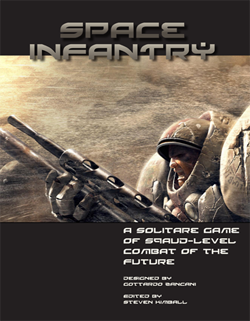
****
Lately we have seen Lock ‘n Load Publishing open its product catalog to more than just war games. All Things Zombie: The Board Game and House of Spirits, both released within the past year, are horror-themed games that have gotten a lot of buzz and praise. Soon, Lock ‘n Load Publishing will step outside the realm of war games for the third time with the Sci-Fi solitaire, Space Infantry. What originally started out as a downloadable Print ’n Play game, Space Infantry featured such clever mechanics and grew so popular that a publisher was bound to take notice. Before too long, Lock ‘n Load Publishing decided to pick it up and now, thanks to them, we can all venture from the far reaches of outer space to the deepest caverns of the enemy hive with top-notch components and streamlined rules.
Space Infantry, by Italian designer Gottardo Zancani, is a game of futuristic squad-level combat set in a generic Sci-Fi universe . . . think StarCraft meets Gears of War, with just a smidge of 40K thrown in for good measure. Players guide a team of armored space marines through the various encounters they stumble across and attempt to complete the mission objective. There are several different types of missions available, including search and destroy, reconnaissance, and recovery, and each individual mission has exclusive rules that only apply for that map; for example, one mission has some locations with zero-gravity, which definitely forces the player to adapt accordingly. Space Infantry uses a unique solitaire system that resolves quickly, and experienced players can usually play through an entire mission in 30 minutes or less.
Components
I wanted to discuss what comes inside the box so you see how much variety is getting packed into the game. This is not the final component list, but it should be very close:
- 7 mission maps
- 6 enemy cards
- 17 unit cards
- 1 turn track
- ~80 counters
- 12 Hive tiles
Each map has fixed locations and a specific mission objective, but every time you play a mission you also randomly select one enemy that you will encounter during that mission. Each mission requires a squad of eight to ten marines, which you will carefully select beforehand. The turn track is used to track resources as well as the duration of each mission, which really gives the game a sense of urgency. The counters are used to mark wounds, conditions, and other important game information. Finally, the Hive tiles are for generating random, modular maps that present players with a different challenge every time. With so many possible combinations, no two missions will be the same.
Gameplay
Gameplay in Space Infantry is actually comprised of two different parts: planning and execution. Let’s take a look at planning first.
As mentioned earlier, there are several missions, enemies, and units to choose from each time you play. During planning, you randomly select the mission and the enemy that awaits you.
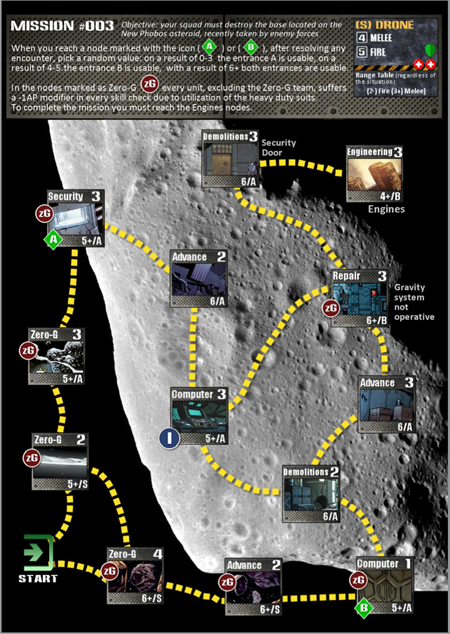
Once you know what your objective is and whom you’re up against, you assemble a team to send on this mission. You must choose which units to bring along based on their stats and skills—only well-equipped teams will successfully complete the mission, let alone survive. You also get to choose eight resources to take with you; resources include grenades, medikits, and a few other useful items.
Execution is when you actually use the units and resources you chose during planning to combat the enemy and complete the mission successfully; you move your team around the map, fight enemy units, and perform various other tasks. Essentially, this is where most of the game takes place and where all the action is.
Movement
To understand movement, we must first look at units and their abilities. There are two types of units: basic and special. Basic units, such as the Assault Team and the Sniper, are mainly 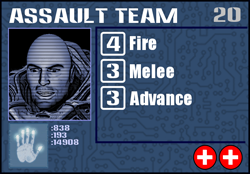
Now let’s look at locations. Each location is labeled with a certain type of skill, like Advance, Science, or Security, as well as a number. The skill stands for the type of obstacle you face at that location (Demolitions might represent an obstruction you need to blow up, Computers might represent a file you need to download, etc.) and the number denotes how many successes you must achieve before you can proceed to that location. When the team attempts to move to a new location, you must use your units’ abilities to pass that skill check.
Still with me? Now let’s look at passing skill checks. Instead of using dice or cards to handle the random factor, Space Infantry relies on the chit-pull system. Of the 80 counters included in the game, several are the numbers 0–6, which are used as a random number pool. When attempting to pass a skill check, you draw one counter from the pool for each skill level the unit has (some have more than one), then divide each random number by the unit’s skill level. The result determines how many successes you achieved—usually between zero and one, but a talented unit can occasionally pull off two successes.
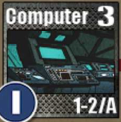
Encounters
The chit-pull system is used for more than just resolving skill checks; after trying to pass a skill check at a location, whether you pass or fail, you must make an encounter check to see if the enemy is near. Each individual location shows the requirements, much like the skill check; however, the format is slightly different. There is a number between 1–6 and the letters “A,” “B,” or “C” separated by a slash. The number, often given in a range, shows how likely an encounter will occur (“1–3” means that an encounter occurs if a 1, 2, or 3 is drawn). The letters represent the enemy’s presence in the area (a class A encounter is a random run-in with the enemy; a class C encounter is the hive or enemy camp). Locations are clearly labeled by how dangerous they are, so you can plan your travel path accordingly.
Combat
The chit-pull system is also used to resolve combat. I won’t go into too much detail, but basically you draw a counter from the random number pool to see if the enemy is close enough for melee or far enough for ranged attacks. Then you draw counters for each combat skill, just like skill checks, for both your team and the enemy. After determining hits and allocating wounds, you continue with the next round of combat until one side is eliminated. There’s more strategy in selecting your team and choosing your resources, both of which make combat much more intense than my brief description. Still, the mechanic is clean and simple.
Hive Rules
This is the aspect of the game that I think I’m most excited about. There are twelve Hive tiles that make up the mission’s layout, complete with special placement rules and some “mystery locations.” In essence, there are usually two to three locations on each tile and some of those locations show a question mark. Whenever your team attempts to move to that location, only then do you find out what skill check you must perform. It is a brilliant way to handle a sort of “fog of war” and keep players on their toes. Oh, and did I mention that there will be some Hive missions included as well? Awesome!
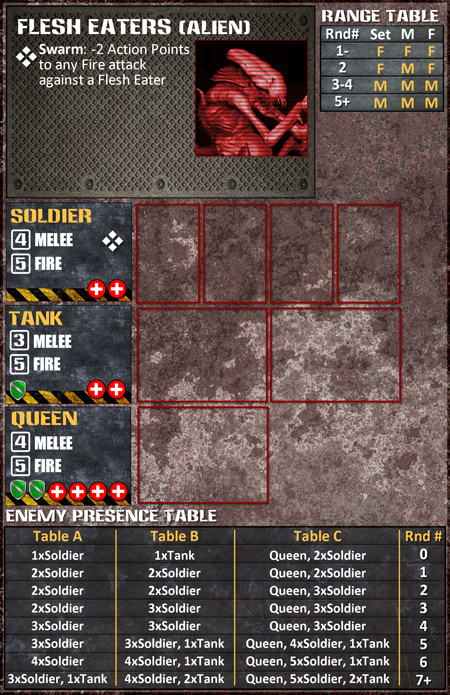
Advanced Rules
I want to leave you a few surprises to look forward to when you open up the box and read the rules for yourself. Here are just a few more things to whet your appetite:
- There is an all-terrain vehicle that you are equipped with in some missions; it fires armor-piercing rounds and can be a big help during combat.
- There are advanced rules that incorporate special tactics called Orders, which are acquired by spending command points.
- There are advanced rules for tracking ammo, which adds another layer of choices and planning.
- There are several optional rules that you may use to increase/decrease the difficulty level should you find the game too easy/hard.
- There are Campaign Rules that allow you to play missions in a consecutive series and increase your units’ stats as they gain more experience.
Last Words
Space Infantry is one of the most innovative solitaire designs I have ever seen. From its humble beginnings as a downloadable Print ’n Play game to its current, polished iteration, there is no other game like it anywhere in the hobby game industry. If you like solitaire (or cooperative) games that offer plenty of choices, lots of replayability, endless customizable options, and all of that in a half hour, you owe it to yourself to jump on the P500 for Space Infantry. You won’t be disappointed.
- The Old Margreve for Tales of the Valiant Reviewed - Apr 27, 2025
- Marvel Comics for April 30th, 2025 - Apr 27, 2025
- DC Comics for April 30th, 2025 - Apr 27, 2025













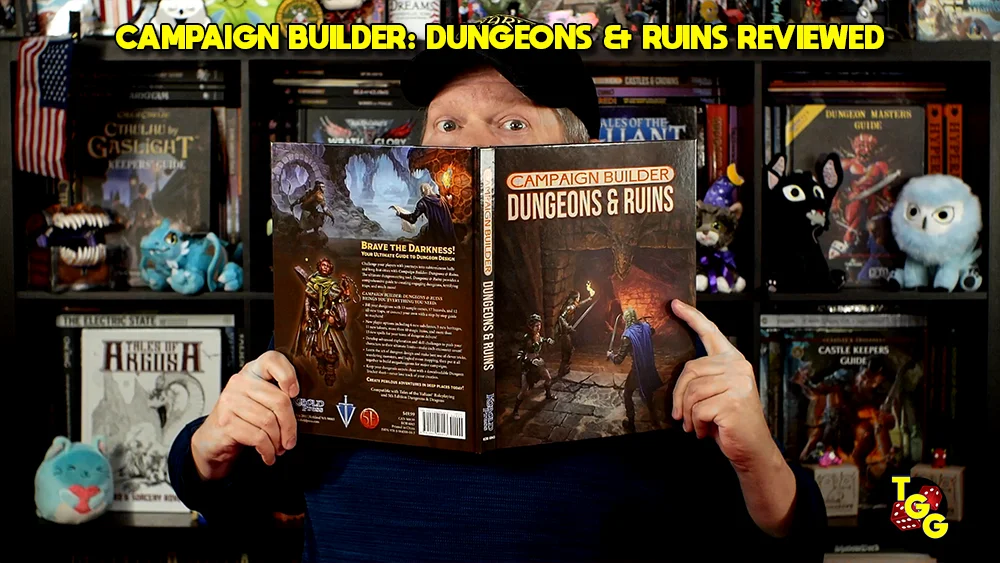




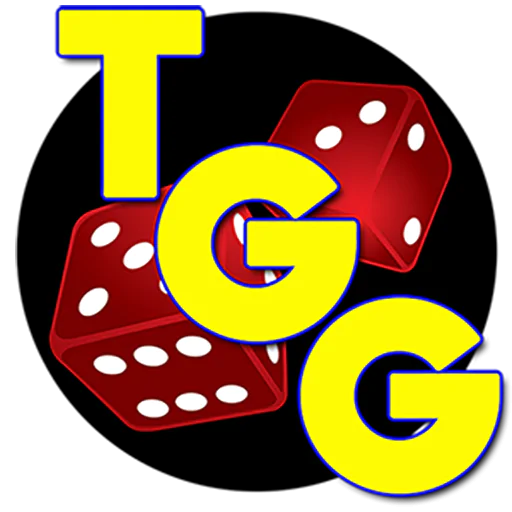
You guys are awesome.